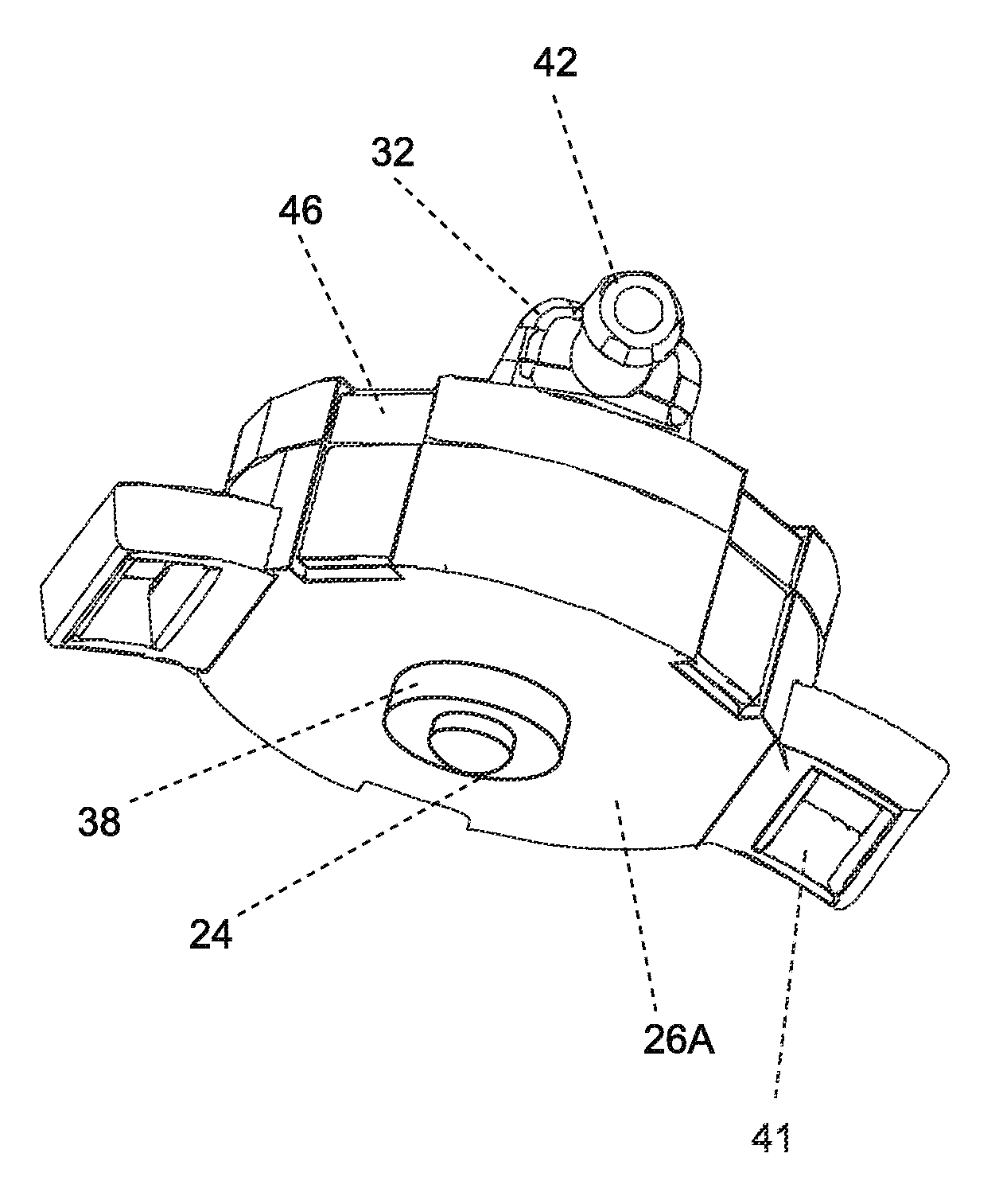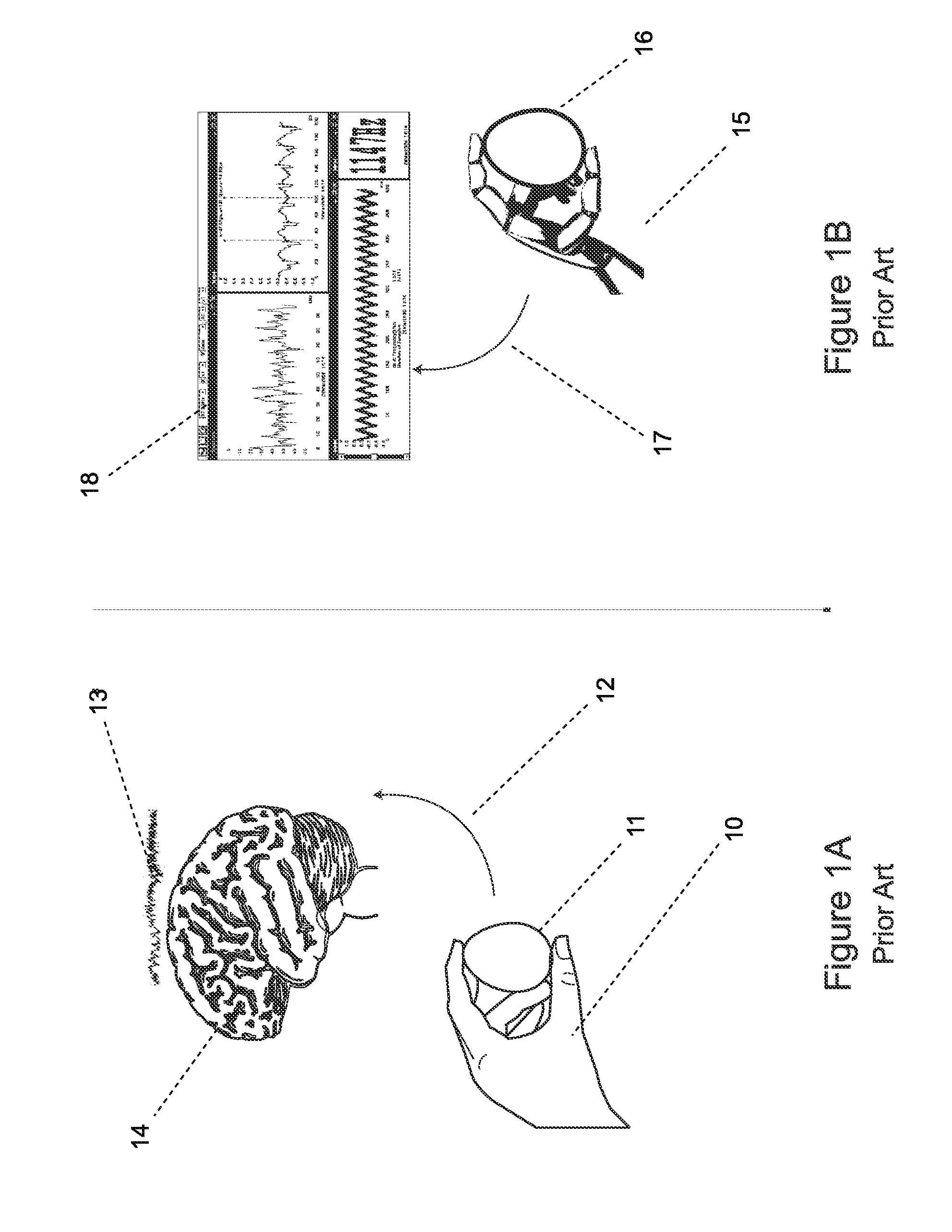Device for providing tactile feedback for robotic apparatus using actuation
a robotic apparatus and tactile technology, applied in the field of remote control systems, can solve the problems of infection, haptics, disjointed control sense, etc., and achieve the effect of simplifying the problem of man-machine interface and avoiding infection
- Summary
- Abstract
- Description
- Claims
- Application Information
AI Technical Summary
Benefits of technology
Problems solved by technology
Method used
Image
Examples
example 1
Surgical
[0189]Many surgical procedures are now being performed with the aid of robotic assistants. Surgeries that previously required major procedures can now be performed with robotic instruments that require minimal incisions but provide comparable results.
[0190]The surgical robotics, employing techniques commonly referred to as Minimally Invasive Surgery (MIS), also provide benefits in terms of patient positioning and access to hard-to-reach locations. Where they are somewhat deficient is in the ability to provide the operator with the tactile sensation that is so critical to many procedures. The loss of the sense of touch as a result of interfacing with control apparatus has long been one of the main disadvantages of MIS.
[0191]Many MIS procedures require dexterity that is hard to approximate without the sense of touch. Simple actions such as maintaining tension on a suture or clamping a vein become nearly impossible tasks. Even the process of displacing becomes problematic, as r...
example 2
Refueling
[0194]Robots are often asked to function as an extension of the human operator allow tasks to be accomplished in ways and locations that would normally preclude a human from succeeding. Few tasks exemplify this situation greater than that of aircraft in-flight refueling.
[0195]Flying boom systems, which represent one method of air-to-air refueling (AAR), have several advantages including quicker refueling and the capability to be used in more adverse weather conditions then a drogue system. The downside is the requirement for an operator to manually operate the boom's control planes in order to guide it into the receiving aircraft fueling receptacle. The operator is guided only by lights and visual cues. Additional cues such as proximity, alignment, and force are not provided leaving the operator to rely on dexterity and experience. Any sudden changes in conditions or movement of the aircraft outside of the air refueling envelope can lead to disastrous consequences.
[0196]The...
example 3
Public Safety
[0200]Robots are frequently used in Public Safety situations, for example when seeking victims trapped by a fire, diffusing an explosive device, or approaching a suspect, either to observe or to disarm. In all of these cases, the robot is acting as an extension of a Public Safety professional, keeping the professional out of harm's way. However, this protective separation between the robot and the operator can also significantly reduce the operator's ability to use his or her senses, which can be critical to the outcome of a situation. Hence, while a Remotely Operated Vehicle (ROV) provides protection, the control interface creates disconnection, leaving the operator to perform manual operations based solely on vision. While it has been proven this limitation can be overcome to some extent by using vision to compensate for a loss of touch, the result still falls far short of full sensory perception.
[0201]The haptics of the present invention can provide a means for the o...
PUM
 Login to View More
Login to View More Abstract
Description
Claims
Application Information
 Login to View More
Login to View More - R&D
- Intellectual Property
- Life Sciences
- Materials
- Tech Scout
- Unparalleled Data Quality
- Higher Quality Content
- 60% Fewer Hallucinations
Browse by: Latest US Patents, China's latest patents, Technical Efficacy Thesaurus, Application Domain, Technology Topic, Popular Technical Reports.
© 2025 PatSnap. All rights reserved.Legal|Privacy policy|Modern Slavery Act Transparency Statement|Sitemap|About US| Contact US: help@patsnap.com



